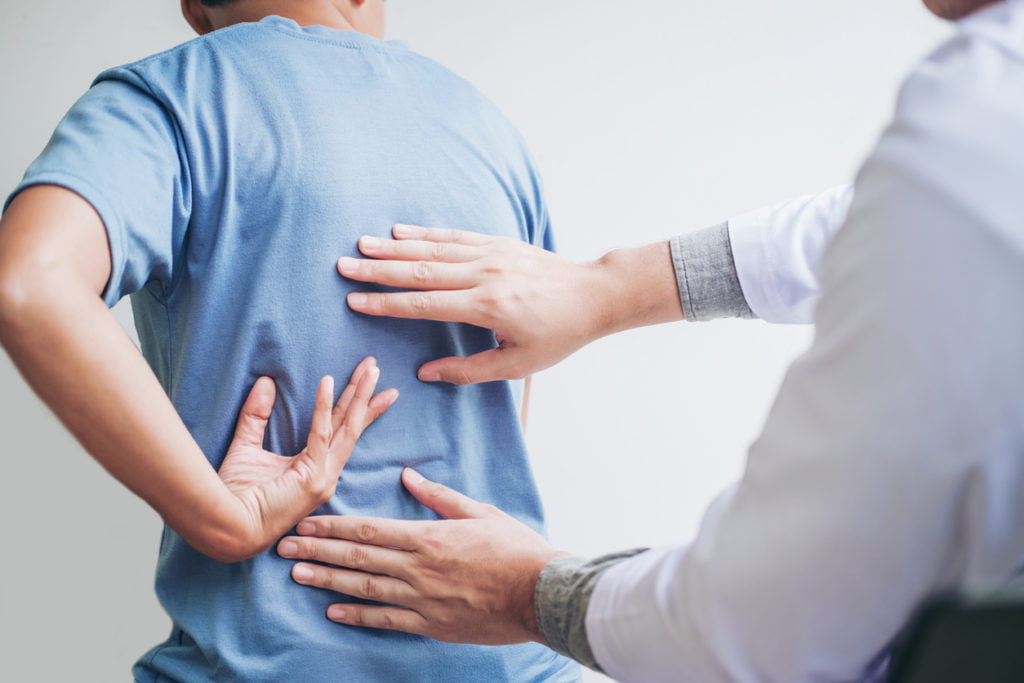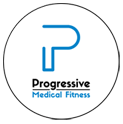
Don’t Live with Back Pain – Find Relief with Physical Therapy!
Back pain is the most commonly reported pain in the U.S., according to the American Physical Therapy Association. In the past three months, one out of four Americans has experienced back pain. Our Progressive Medical Fitness physical therapy team will focus on the root of the problem to provide effective and long-lasting relief.
If your back is painful when you wake up in the morning or you notice aches in your back, buttocks, or thighs throughout the day, Progressive Medical Fitness in Northport can help alleviate your discomfort so you can live your daily life without pain.
Back pain and sciatica are similar, but there are key differences. These types of pain are often confused with one another. Back pain is pain felt specifically in the upper, middle or lower back. Sciatica pain begins in the lower back and radiates down the buttock, thigh, and even leg.
Radiculopathy describes symptoms associated with a pinched nerve in the spine. Symptoms can vary by location of the affected nerve, but may include a weakness, numbness, tingling, burning, or sharp pain to a specific part of the leg. Radiculopathy symptoms occur when the space narrows where the nerve exits the spine, which can be a result of a herniated disc.
If you are suffering from back pain or sciatica, potentially harmful painkillers, such as opioids, merely mask your pain. In many cases, a physical therapy treatment plan is able to eliminate the need for harmful painkilling drugs, and invasive and expensive surgical procedures.
Physical therapy effectively treats back pain and sciatica
Your back pain may be constant or intermittent, but it is always important to treat it right away. Delaying treatment can impact normal joint movement, and produce core weakness, and decreased muscle coordination. These conditions are all preventable and can lead to further, future injuries.
The beginning stage of your physical therapy treatment plan will focus on relieving pain. Once you are comfortable, your physical therapist will move to the next stage of treatment, building strength of your core muscle groups with an individualized exercise and stretching regiment.
Improving your strength and range of motion, reduces the strain on your back and prevents a recurrence of spinal injury. Your physical therapist will also teach you ergonomic techniques that promote proper spinal function and wellness during daily activities, such as driving or sitting at a desk.
For the treatment of sciatica, your physical therapist will address the tightening of the sciatic nerve through a specialized treatment plan that focuses on leg stretches. This restores the proper functioning and health of the nerve and quickly reduces symptoms and relieves discomfort.
Physical therapy is an effective treatment for both back pain and sciatica. Our Progressive Medical Fitness physical therapy team will create an individualized treatment plan based on your specific condition.
Back pain vs sciatica – the difference
Back pain
Back pain can be short-term and intense (acute) or long-term (chronic). “Back pain” is pain that can be caused by an array of chronic and acute conditions. For example, you may experience back pain due to prolonged poor posture or a sudden injury such as a motor vehicle accident or lifting strain. Our Progressive Medical Fitness physical therapy team designs an individualized treatment plan that takes into account your medical history, the conditions that led to the development of the back pain, and the exact location of the pain.
Sciatica
While sciatica is a specific type of back pain that is reported to be highly uncomfortable, it is also fortunately simple to diagnose and treat. People with sciatica experience pain along, the largest nerve in your body – the sciatic nerve. This nerve extends from the lower back all the way down to the feet. The sciatic nerve begins in the lower back, then splits at the base of the spine to extend further down to your buttocks, legs, finally terminating at the bottom of each foot. The sciatic nerve can become pinched or irritated, which causes sensations such as a “shooting pain,” “stinging,” or “burning” in the lower back, buttocks, legs, or feet.
Causes of back pain and sciatica
General back pain typically develops due to injury of the muscles or ligaments of the back, or spinal discs. This can be due to overuse, such as frequently leaning down throughout the day to pick up a toddler, or a more serious, sudden trauma, such as a motor vehicle accident.
An underlying condition, such as a herniated disc, can also be the source of immense pain, and cause radiculopathy pain to the lower extremities.
As we age, degenerative disc disease is a commonly occurring condition which can cause back pain. Those with degenerative disc disease typically experience aching pain in the lower back, and find prolonged standing or walking to be difficult.
Lumbar radiculopathy is the medical term for sciatica. People between the ages of 30 and 50 are most at risk for developing this condition. Arthritis, bone spurs, or any other injury that impacts the sciatic nerve are among the wide range of ailments that can cause sciatica
The gluteus and hip muscles can become tight and stiff as a result of a loss of flexibility in the hip joints and pelvis. When the hip joint and pelvis is not able to flex properly, the proper alignment and mechanics of the spine are affected. The sciatic nerve can be pinched or compressed as it travels through these tissues, leading to pain.
Schedule an appointment to find relief
If you are experiencing recurring back pain or sciatica that is limiting or making your daily routine uncomfortable, Progressive Medical Fitness is able to help relieve your symptoms.
Request your appointment with our Northport physical therapy team to begin taking the first steps toward recovery and living a pain-free life.
